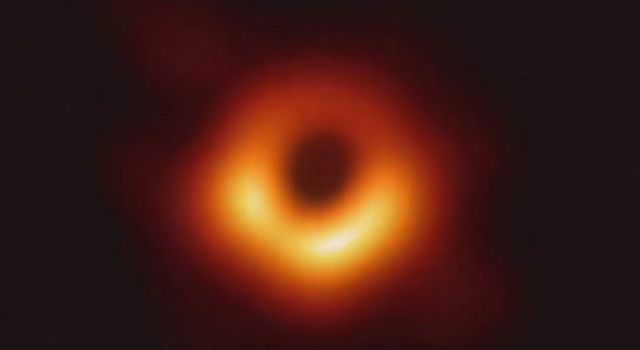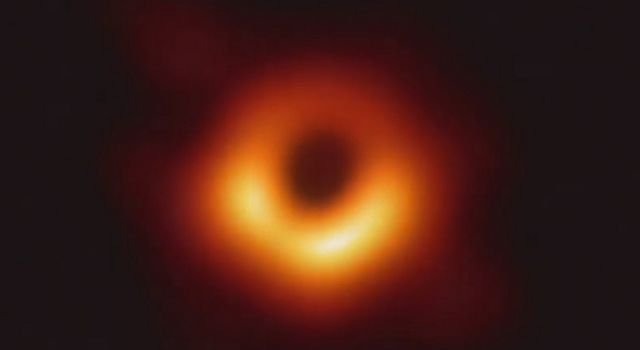This is a follow up to my previous post on Black Hole.
On April 10th, 2019, NASA Scientist publishes an image, claiming that they had taken a picture of the Blackhole.

This raised a question. We can see things due to the fact that there is light coming from that object to our eyes/ or our light captured device. But if no light can escape from the black hole, then how can we capture the image of Blackhole?

The reason is simple. Yes, blackhole does trap nearby light rays into its zone. However, with light rays that are a bit further, blackhole is only able to bend their path. The light rays now are bent over, go around the black hole, and go back to our light captured device. So the image we receive is not the actual size and shape of the black hole, but more likely to be its shadow.
Why there are 2 different light parts, with the lower one lighter than the upper one?
Usually, all the galaxies are rotating. They are actually rotating extremely fast, too fast that itself cannot condense in the radial direction. We can try to hold a string, with a heavy ball at one end, then rotate very fast on the other hand. We can see, the whole system gradually becomes flatter and flatter as the speed increases.
The black hole, on the other hand, usually sits as the center of the galaxy due to its extreme gravity. This would mean that all the stars and planets will oscillate around it.

And all of the light rays we capture origin from these stars and planets. As a result, the lower one is brighter because it comes from the nearer stars in front of the black hole. On the other hand, the upper one is from the stars behind the black hole, which is further and results in dimmer light.
What if we fall into Black Hole?
There is no real experiment on this case, however, we can predict what will happen. As we move closer to the Black Hole, its gravitation force will become stronger and stronger. up to a point that our body will begin to experience something called “the tidal force”. This is the difference between how gravitation force acts on different parts of our body. For example, if we free-fall with our head down, the head will accelerate faster than our feet. This tidal force is even stronger than the chemical bonds holding our body, which results in the disintegration of human parts, and we will become a line of atoms falling to the core. However, this tidal force is less severe in the massive Black Hole ( which mass is millions of the Sun, for example, we have one in the center of our Milky Way), which then the difference in acceleration is not enough to rip our body apart and we can still be alive.
If by any magical chance, an astronaut can go through the event horizon with his body remains not ripped, what happens after that is still a mystery on our knowledge. Since space and time and all of the normal physics theory will behave differently in the core of the Black Hole, there is millions of unknown possibilities can happen. Stephen Hawking did propose the idea of the multi-universe on this problem, where one singularity point can be a Black Hole in this reality but can be nothing in another. So after the astronaut travels through the horizon, if he’s still lucky enough, he can travel through different universe with different histories where that point is no longer a Black Hole. However, this also means that he never can go back to our reality.
How about the people who observe from outside? What do they see? Since the time-space dimension is affected by gravity, we will see the astronaut fall slower and slower. Up to a point that he becomes freeze in his motion. This is because there is no more information that can escape from the Black Hole to travel to our observing device, which makes the final state of his falling freeze, aka Time is frozen.

No responses yet